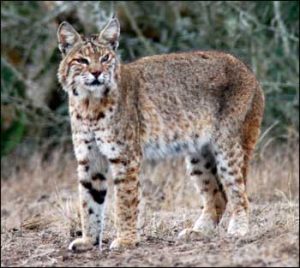Cool Cats — Bobcats Roaming Urban Areas
This is Passport to Texas
Bobcats thrive in urban areas of Texas. Twice as large as domestic cats, this relative of the lynx is secretive.
If someone comes across a bobcat, take a moment to enjoy the opportunity that you see this secretive, shy animal.
Richard Heilbrun is the conservation outreach leader for Texas Parks and Wildlife.
We did an urban bobcat research project in Dallas-Fort Worth, and we had high numbers of bobcats thriving in the Trinity River corridor, because there’s good, functioning, healthy, ecosystem.
Urban bobcats perform an ecosystem function that most folks don’t realize.
We just completed a research project on diet of urban bobcats in the Dallas-Fort Worth area by looking at their scat. Which is their droppings. And, it looks like urban bobcats in that area, rely on rodents for about 65 percent of their diet. If you tease apart the data just a little bit more, fifty percent of their diet is non-native urban rats. So, they’re really performing an ecosystem function for us by consuming these rats that, biologically, shouldn’t be there anyway. So, we’re taking a negative—these nonnative rats—and we’re feeding them to a native predator that should be there, and is adding value to our ecosystem.
Learn more about urban wildlife on the Texas Parks and Wildlife website.
The Wildlife restoration program supports our series and funds research on the ecology of urban bobcats in DFW.
For Texas Parks and Wildlife…I’m Cecilia Nasti.



 Passport to Texas is a
Passport to Texas is a  Passport to Texas is made available by:
Passport to Texas is made available by: